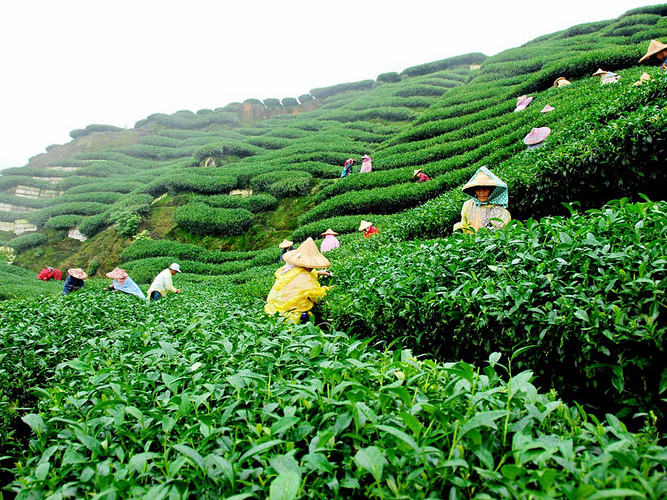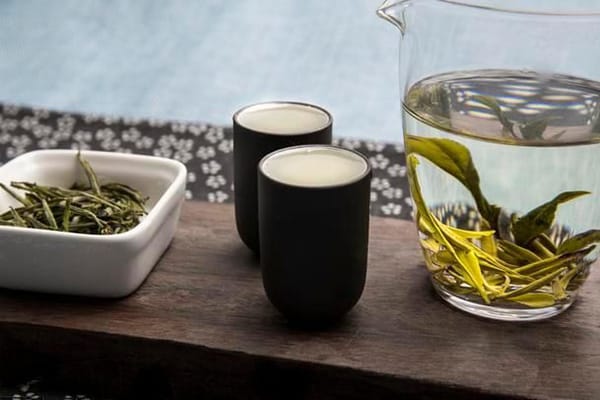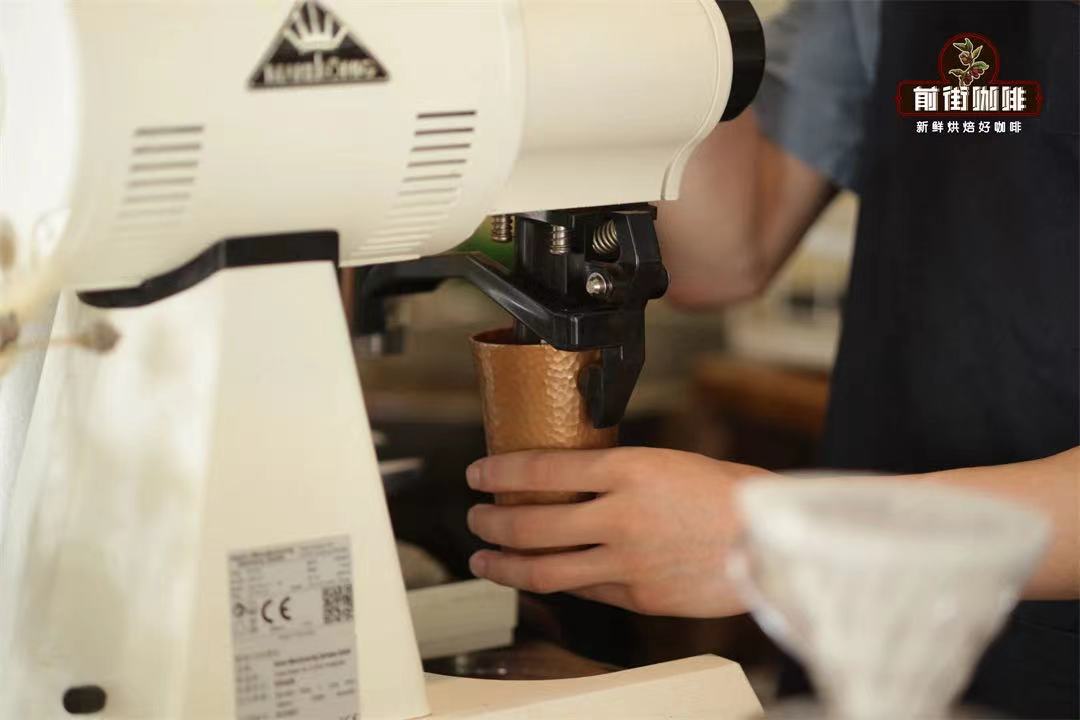Are black tea and green tea the same raw materials? the main difference between black tea and green tea is that the production process is different.
Many beginners may think that green tea, oolong tea and black tea all grow on different plants.
As everyone knows, these three kinds of tea all come from the same kind of tree, and they are different in aroma and taste because their leaves are treated differently after their leaves are picked, and the environment in which they originally grew is different.
Unlike coffee, the golden belt of coffee cultivation lies between the Tropic of Cancer and the Tropic of Cancer, while the golden belt of tea trees was distributed between 42 degrees north latitude and 33 degrees south latitude in 1930. The way that tea originated in China spread to the world is called "Tea Road", and China is also the root of tea-tasting culture.
The origin of tea is China, and if you are more specific, there will be differences. On the one hand, the earliest tea was bred on the highlands of the Hengduan Mountains that straddled what is now Yunnan Province and Xizang; the other is that the hills of southeastern China are the birthplaces of tea.
It is reported that tea trees were cultivated around the 4th century AD, and tea has become a hobby of the upper class in the Tang Dynasty. After that, tea was transported through the Silk Road to the Middle East, India and other regions through Xizang. Later, it spread to Japan with the Japanese envoy of the Tang Dynasty in the early Heian era of Japan around the 9th century AD. Since then, the Silk Road, which was very popular through the trade between the East and the West, and the sea passage that appeared in modern times, tea became popular in Europe and the United States, and then the black tea culture, which began in Britain, gradually spread to all parts of the world.

Black tea, oolong tea and green tea all grow from tea trees. Black tea is made from tea trees, a shrub of the family Theaceae, as well as oolong tea and green tea.
These three kinds of tea have their own unique aroma and taste, this is because different tea production methods, in the final analysis, the degree of oxidation and fermentation is different, and the difference in fermentation degree will make the taste and aroma of tea different.
Green tea belongs to non-fermented tea, which means no fermentation at all; black tea belongs to fully fermented tea, which requires complete fermentation to produce the unique taste of black tea; oolong tea belongs to semi-fermented tea, which happens to be between green tea and black tea, and needs to stop fermentation before the fermentation process of tea is completed. Generally speaking, it is the difference in the degree of fermentation that creates different kinds of tea.
Varieties of tea trees
With the rapid development of science, science and technology are becoming more and more advanced, and there are more and more tea varieties. But generally speaking, tea trees can be roughly divided into two categories, one is small leaf species, and the other is large leaf species.
The most common big-leaf species is the Indian species, which is also known as the Assam species and is very suitable for the production of black tea. The leaves of the Assam species are about twice as long as the leaflet species (12 cm to 15 cm), with a rugged surface and thicker fibers. The front end of the leaf is sharp and the color is light green. Indian species cannot grow in cold areas and can only be cultivated in the tropics. Due to the strong sunlight in the tropics, the variety produces tannin, forming the unique astringent taste of black tea.

Another leaflet species is called the Chinese species. The leaf surface of the Chinese species is quite smooth, and the leaves are relatively small, about half the length of the Indian species (6 cm to 9 cm). The color of the leaf is heavier and the front end of the leaf is more round. The tea trees planted in China are more hardy, and the tea trees cultivated in Japan also belong to Chinese species. Leafy tea trees are suitable for making green tea, but they also produce world-class black teas such as Darjeeling and Qimen.

Due to the different climatic conditions and picking methods of tea growing areas, the proportion of astringency, bitterness and sweetness in tea is also different.
Important Notice :
前街咖啡 FrontStreet Coffee has moved to new addredd:
FrontStreet Coffee Address: 315,Donghua East Road,GuangZhou
Tel:020 38364473
- Prev

How to use a coffee sifter
How much is the grinding degree of hand-brewed coffee? Why is the 10-scale grinding of your machine different from my 10-scale grinding? Is the sugar size fine sugar or coarse sugar or yellow sugar? Still fretting about the right grind for your coffee brewer? An article on the front street takes you to determine the coffee grind thickness! (Collected! Collections! Collect it!) coffee grinding
- Next

Starbucks and Nai Xue all started to sell alcohol and tea. How do you change the beverage industry? Three business models of bars
The holiday does not drink, the road of life is in vain, night falls, one person relaxes and two people chat for fun. Have a drink, a way to enjoy life and reduce stress for fast-paced and dreary work. I'd like to talk to you about the bar today. Where does the name bar come from? What are the modes of bar operation now? What kind of coquettish operation is the combination of coffee and wine? With these questions,
Related
- Beginners will see the "Coffee pull flower" guide!
- What is the difference between ice blog purified milk and ordinary milk coffee?
- Why is the Philippines the largest producer of crops in Liberia?
- For coffee extraction, should the fine powder be retained?
- How does extracted espresso fill pressed powder? How much strength does it take to press the powder?
- How to make jasmine cold extract coffee? Is the jasmine + latte good?
- Will this little toy really make the coffee taste better? How does Lily Drip affect coffee extraction?
- Will the action of slapping the filter cup also affect coffee extraction?
- What's the difference between powder-to-water ratio and powder-to-liquid ratio?
- What is the Ethiopian local species? What does it have to do with Heirloom native species?

